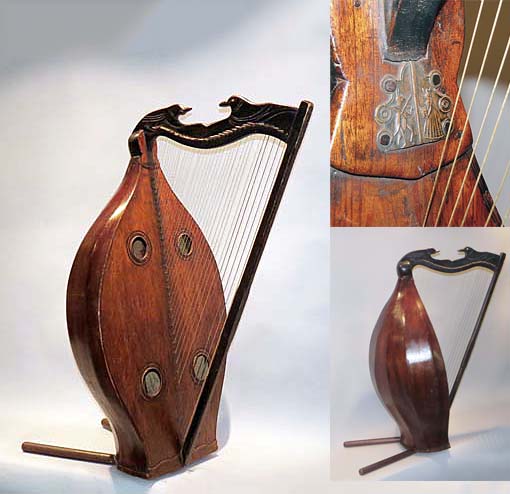
Owner: HWMC
Catalog#: LA-CHHP-01
Conservation by Andy Ploof, Music Folk (St. Louis, MO)
Harps
Peru ‘Arpa Domingacha’
Peru
Peruvians
Wood, mother-of-pearl, gut strings, metal plate
Early 20th century
Height: 42 inches
Chordophones – Harps
This pear-shaped single-rank, diatonic harp is labeled from Cuzco and is called arpa domingacha (dominguita or domingacha). There are 35 gut strings, four sound holes and the animals carved on top have mother-of-pearl inlay eyes. The harps in Latin America are descendants of the harps brought by the Spanish conquistadors, colonists, and missionaries. Harps and violins were used in cathedrals and played a significant role in Jesuit evangelistic activities throughout South America. It was also popular among the Indians in the Quito area of Ecuador. Seen in iconographic art, the harps were often carried on the shoulders when played by musicians outside the church, such as in processionals or for dancing. This is still the practice today.
In Peru there are two types of harps, the longer, straight resonator body instrument and this domingacha, a smaller harp found principally in the state of Cuzco. Peruvian harpists perform huayno (waynos), the popular dance music and song of the indigenous communities. The huayno are strophic songs in duple meter, with highly syncopated melodies in contrasting phrases. The harp may be accompanied by singing, and a variety of string and wind instruments. Each region of Peru can be identified by particular left-hand, or bass patterns, played on the harp in the huayno (waynos).
Resource: “Harp,” Joan Rimmer/Robert Evans, William Taylor. “The Grove Dictionary of Musical Instruments.” 2nd ed., Vol. 2., Laurence Libin, Editor in Chief. Oxford University Press, 2014.
